Gherardini family
The Gherardinis of Montagliari (or Florence) are one of the most prominent historical Noble family from Tuscany, Italy. Between the 9th and 14th centuries, this family played an important role in Tuscany. Its influence was also felt in the Veneto and Emilia regions between the 16th and 18th centuries and during the Italian Risorgimento as well as in today's Italian politics and economy.[1] The family’s restless and fighting nature has aroused the curiosity of many historians of the Middle Ages. Originating from the feudal tradition, it was one of the founding families of the Republic of Florence. The family took part in Florence's political life between 1100 and 1300. In 1300 it was exiled from the city when Florence began its transformation into a Signoria. In his Divine Comedy, Dante Alighieri, who was exiled with the Gherardinis, placed the family in Paradise's V Sphere. Following its exile from Tuscany, the family joined the Great Council of Venice (Venice's Chamber of Peers)[2] and until 1800 kept some fiefs between Tuscany and Emilia Romagna. Arms of this family is a quarterly Barry of six vair and gules and imperial eagles. The oldest knightly tomb in Tuscany (in the Church of Sant'Appiano, near Barberino Val d'Elsa) belongs to this family.
| Gherardini of Montagliari (Florence) | |
|---|---|
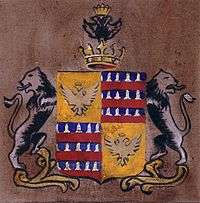 | |
| Current region | Tuscany, Lazio |
| Place of origin | Tuscany |
| Motto | "Festina Lente" |
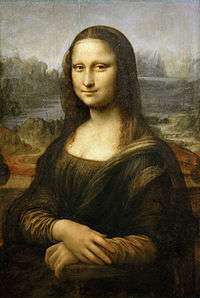
Origins
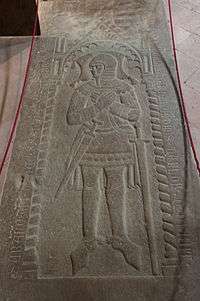
According to the most recent university research, in 856 the family founded the Church of San Piero a Ema (with Gaifredo) and "nepotes Ceci" as a sobriquet. The family is described in documents dating back to that period and kept in the Church of San Miniato in Florence. They were feudatories in the Chianti and the Val d'Elsa areas and settled in Florence in 1100 following the death of Matilda of Tuscany. They founded the Republic of Florence and had a number of Consuls in the Republic ("Consul Civitatis": heads of government).[3] Two centuries later, they took part in the fights between the Guelphs and the Ghibellines and subsequently between the White and Black Guelphs; they were with the "White" faction and were opposed to the transformations which led to the birth of the Signoria. Some of the leading figures of the family during that period include: Gherarduccio Gherardini (whose tombstone in the Church of Sant'Appiano is the oldest knightly tomb in Tuscany), Noldo Gherardini, Cece Gherardini, Vanne and Bernardino Gherardini, Lotteringo Gherardini, Cione Gherardini known as "il Pelliccia" and Andrea Gherardini "lo Scacciaguelfi" (the Shoo Away the Guelphs).[4] More recent university studies have confirmed both the central role played by this family in Florence's medieval history and its members' reputation as inflexible as shown by the statistics on penalties and sentences which afflicted some families in that period. According to Christiane Klapisch-Zuber, a French historian, the Gherardinis from Montagliari were "instigators of disorders", "with little desire to participate in public life". They were also a "bellicose and rude" family. This deeply independent character must have been at the basis of the family's decision not to abide by the new rules of the rising Commune of Florence such as the Ordinances of Justice of 1296 which aimed at forcing aristocracy to give up their names of origin and privileges. Unless they did so, there were very high taxes and penalties for them. Their opposition explains the passion with which Florence fought them, destroying, where possible, their assets.[5]
Civil War and Exile
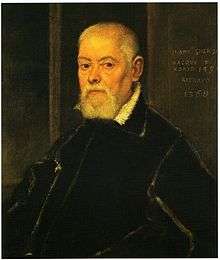
Following many years of civil war, the Gherardinis were exiled in 1302 because they were accused of having forged an alliance with the neighbouring city of Siena. According to historians (and contemporaries of the time), the accusation was based on false documents and invented by Cante Gabrielli, the Podestà, to stamp out this family and its allies once and for all.[6] Following this accusation, Florence attacked the Gherardinis. The land they owned or controlled went from the first sighting centres near the southern walls of Florence, and from Marignolle up to Impruneta. It then went on up to the main fortresses of Montagliari and Montaguto near the current Greve in Chianti. To the west, their land went all the way up to the fortress of Linari near Barberino Val d'Elsa. In the summer of 1302, following a siege, both Montagliari and Montaguto were burned to the ground. The Republic of Florence then decreed that it was no longer possible to build on this area. This edict was breached by the Gherardinis in 1632 when they built a chapel.[7] The western part of the Gherardini's land and properties withstood the attack by the Florentines because Andrea Gherardini was ruling the nearby city of Pistoia and the Gherardinis enjoyed greater strength in Valdelsa (a valley south of Florence). A few years later, Henry VII, Holy Roman Emperor tried to remove this family from Valdelsa but did not succeed because the Castle of Linari, led by Vanne Gherardini, withstood the summer siege of 1313. Following the death of Gherarduccio Gherardini in 1331 (buried in the Church of Sant'Appiano, near Linari), the family lost its last great commander and the last remaining properties were gradually lost too.[8]
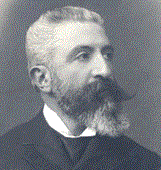
After the fall of Montagliari, and the subsequent loss of their land and properties in Val d'Elsa, the last Gherardinis (except a small group) went into exile to Verona that, at that time, was under the Empire. Dante Alighieri went into exile with them too. At the same time, the Florentines finished to destroy the Gherardinis' buildings in the city as well as other evidence of their life there. This was their third exodus. The previous expulsion of the Ghibellinis, half a century earlier, meant that some Gherardinis moved near Verona and Rovigo (they came together again later on). The first exodus took place around 1120 with the death of Matilda of Tuscany. One of the heads of the family, Gherardino, and his children (Tommaso, Gherardo and Maurizio) decided to leave Tuscany. Initially they were members of the retinue of Louis VII of France, called the Young, and then they were with Henry II of England and went to conquer Ireland, where, according to tradition, they started the FitzGerald dynasty. This issue is still being studied by some historians.[9]
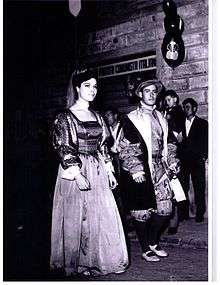
The Current Branch

In 1633 thanks to Gaspare and Angelo, the main branch, that had settled in Verona between 1300 and 1400, added some properties in the Emilia region to the fiefs they had received when they had arrived (Montorio, Bardolino, Sorgate and Montecchiana). From the Este and the Gonzaga families, they bought the Marquisate of Scurano, Bazzano and Pianzo, that of San Polo d'Enza, and in 1652 the Marquisate of Castelnovo di Sotto. On 19 November 1652, Bernardino, younger brother of Gaspare and Angelo, welcomed the Gherardinis among the noble families of the Great Council of the Republic of Venice. The two branches came together again in 1811.[10] With the arrival of Napoleon, the Republic of Venice and Venice were occupied by the French and given to Austria. While their fiefs were occupied and absorbed by the Napoleonic kingdoms in 1805, the Gherardinis, after ten centuries, lost their independence. This is why they started to support the new cause of Risorgimento – the unity of Italy – and subsequently, following the unity, they took part in Italian political life and often served in the armed forces.
Other branches
After the exile in 1300, a small branch stayed on in Tuscany but died out in the 18th century with four brothers: Hippolytus (died as a baby); Anthony (died in the war of Hungary); Alemanno (Knight of Malta) and Fabio, who was the last to die in Denmark in 1743. None of them left any heir. This was the branch Lisa Gherardini, the Gioconda, belonged to. In 1632, this branch and the current branch built the Chapel of Santa Maria della Neve in Montagliari (subsequently drawn by Leonardo da Vinci). In January 1857, with a Decree of the Duke of Modena, another branch took on "Gherardini-Parigi" as its surname in order to continue the line of Gian Marco Gherardini's mother, Alda Parigi of the Counts of San Severino. However, this branch too soon died out with the death of his grandson, Giulio, in the mid-20th century.[11] From 1660 another branch lived in Lendinara and in Ferrara (Noble family of Lendinara, Counts of Lusia, Noble family of Ferrara). This branch originated with Francesco di Corradino but died out in 1830 in Ferrara because Francesco had only one daughter, Isotta, born in 1817.[12] An older branch developed in France with Girardin as its surname. According to a well-documented historical event referring to Peter and Lotto, sons of Noldo of the Gherardinis, in August 1343, they followed Walter VI of Brienne, Duke of Athens, to France. According to some sources, they were granted the Signoria of Marail in the Champagne region. Peter died on 9 September 1393 and is buried in the Church of Marail (Castle of Hervì). The Marquis René-Louis de Girardin (1735–1808) claimed to belong to this branch. The legendary story of Thomas, Gerard and Maurice, sons of Gherardino, still lives on. They left with Henry II of England to go and conquer Ireland where they initiated the FitzGerald branch. The FitzGerald Dukes and the Gherardini of Montagliari are known to be in touch.[13]
Patronage
One of the peculiarities of this family, defined by historians as "rude" and hardly observant of the rules of public life,[5] is a constant vein of patronage. Some serious patronage is well documented like the commission given to Fra Angelico to create an altarpiece for the family chapel near the Church of Santo Stefano al Ponte in Florence. Lotteringo Gherardini is buried in this church. The altarpiece was commissioned in 1418 but went lost.[14] According to art historians, the Gherardinis supported Alessandro Turchi, called l'Orbetto, who they commissioned many works of art to.[15] Nothing is known about the relationship between the family and Tintoretto, except that the Gherardinis were members of the Great Council of the Republic of Venice and, therefore, frequented Venice. However, in 1568 the Venetian painter drew the portrait of Francesco Gherardini. The portrait is on display at the Ca' Rezzonico Museum of Venice. Although there were contacts with Leonardo da Vinci, their full nature is not known. Leonardo drew both the portrait of Lisa Gherardini and the Gherardinis' Chapel in Montagliari. A painting commissioned by the family in 2010 can be seen in the Church of Sant'Appiano, still used by the family and where Gherarduccio Gherardini is buried. At the bottom of its frame, visitors can read the following:
Florentiae clarissimae Gherardinis familiae nos J.Raphaelus Dominus Cynthiaque MariaTeresia Dominae comites hanc operam in Gherarducci memoriam Sancti Appiani Templo donant. A.D. MMX.
Recent history and the Gherardinis today
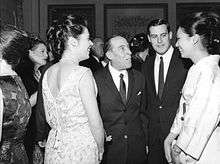
According to the last Register of Italian Nobility approved by the Ministry of the Interior of the Kingdom of Italy (1939) and in accordance with its official genealogy, the Gherardinis of Montagliari are divided into two branches: one branch is headed by Marquis Francesco Alberto (primogeniture) whereas the second is headed by Count Gian Claudio (cadet branch). The current residences of the Marquises and Counts Gherardini are in Rome, Venice, Florence and Siena. Although the family is not interested in being in the news, some articles were written in 2007 and 2010 on Countess Cinzia Maria Gherardini, the current oldest member of the family.[17] A 2014 cover story published by Sette, the italian weekly magazine of Corriere della Sera, was dedicated to the Gherardini family and their relationship with the FitzGerald family as well with the Kennedy family. For the magazine these families have maintained relationship among them even in recent time (for example with John Fitzgerald Kennedy at the White House).[18]
Some of the most recent and best known members of the Gherardini family are: Marquis Maurizio, Great Chamberlain of the Emperor of Austria and Austria’s Minister Plenipotentiary at the Kingdom of Savoy; Cristina Trivulzio Belgiojoso (daughter of Marchioness Vittoria Gherardini), first female newspaper director whom Carlo Cattaneo defined the "first lady of Italy" for her commitment towards national unity; Marquis Gian Marco, Chairman of the Savings Bank of Reggio Emilia and Podestà of the Municipality of Reggio Emilia from 1851 to 1854; his son Gian Francesco Gherardini, mayor of Reggio Emilia from 1873 to 1881, Member of Parliament and subsequently Senator until his death in 1926; his grandson, Count Gian Claudio Gherardini, Commander of the 8th Bersaglieri (Marksmen) Regiment in El Alamein and subsequently Commanding General of Folgore Parachute Brigade who died in 1971) and was the first one to bring back to Florence the Gherardini of Montagliari after seven centuries; his great-grandson, the economist Jacopo Schettini Gherardini, candidate for the National Secretariat of the Democratic Party (Italy) during the primary elections of 2007.
References
- Titles: Lords of Montagliari in Tuscany, Patrician of Venice, Marquises of San Polo d'Enza, Marquises of Castelnuovo de' Gherardini, Marquises of Bazzano, Scurano and Pianzo, Patricians of Reggio in the Emilia region. From the Register of Italian Nobility during the Kingdom of Italy edited by the Ministry of the Interior, 1930
- Participation in the Great Council was established on hereditary right, exclusive to the patrician families enrolled in the Golden Book of the Venetian nobility
- See the most recent studies carried out by Enrico Faini (University of Firenze): Enrico Faini, "Uomini e famiglie nella Firenze consolare", Firenze 2009, p. 23
- According to a study carried out by Enrico Faini of the University of Florence, prof. Jean-Claude Maire Vigueur and prof. Andrea Zorzi ("Il gruppo dirigente fiorentino nell'età consolare" n "Archivio Storico", CLXII (2004), p. 210), there were about ten old aristocratic families who moved to Florence from 1000 and 1100: Amidei; Ardinghi; Brunelleschi; Buondelmonti; Caponsacchi; Donati; Fifanti; Gherardini; Guidi; Nerli; Porcelli; Scolari; Uberti; Visdomini.
- Christiane Klapisch-Zuber (Directrice d'Études all'École des Hautes Études en Sciences Sociales) "Ritorno alla politica. I magnati fiorentini 1340–1440", Edizioni Viella, 2009. pp. 206, 236, 238.
- Dino Compagni, "Cronica delle cose occorrenti ne' tempi suoi" .
- "I Gherardini ed il Castello di Montagliari", Giuseppe Corazzini, Ed. Landi, Firenze 1897
- "Storia di Poggibonsi" by Francesco Pratelli – Lalli Editore. Poggibonsi, 1990.
- "I Gherardini ed il Castello di Montagliari" di Corazzini; "Unpublished Gherardini documents" Samuel Hayman; "Vignamaggio e Montagliari dal XIV ad oggi" AA.VV; Mini in "Discorso sopra la nobiltà di Firenze"
- For further information on the Gherardini's rule of these fiefs, see: Iotti, “San Polo d'Enza, Feudatari e Comunità, 1988, edito dal Comune di San Polo.
- Enciclopedia Storica Nobiliare italiana, di Vittorio Spreti, V.III, 1930, p.418.
- Repertorio Genealogico delle famiglie confermate nobili nelle province Venete. Francesco Schroder, Segretario di Governo, Venezia 1830, p.367
- "La leggenda dei tre Valdesani conquistatori dell'Irlanda", V. Uzielli, Firenze, 1906.
- Alvaro Spagnesi, Sergio Pacciani, Santo Stefano al Ponte Vecchio, Edizioni della Meridiana, Firenze 1999.
- Si veda il saggio di Daniela Scaglietti Kelescian, "Alessandro Turchi detto l'Orbetto (1578–1649)", Milano, Electa, 1999.
- Mons. Ferrandino Fiorini "Sant'Appiano. Un'antica pieve in Val d'Elsa" Arti grafiche Nencini, 1997.
- Arte: Contessa Gherardini, Erede Di Monna Lisa Sono Io
- Sette, Corriere della Sera, 28 March 2014, n.13. Cover: "Kennedy, l'Italiano". Title of the article at page 28: "Dall'America a Firenze passando per l'Irlanda. Così andando a ritroso fino ai "figli di Gerald" abbiamo ritrovato Kennedy "l'italiano".